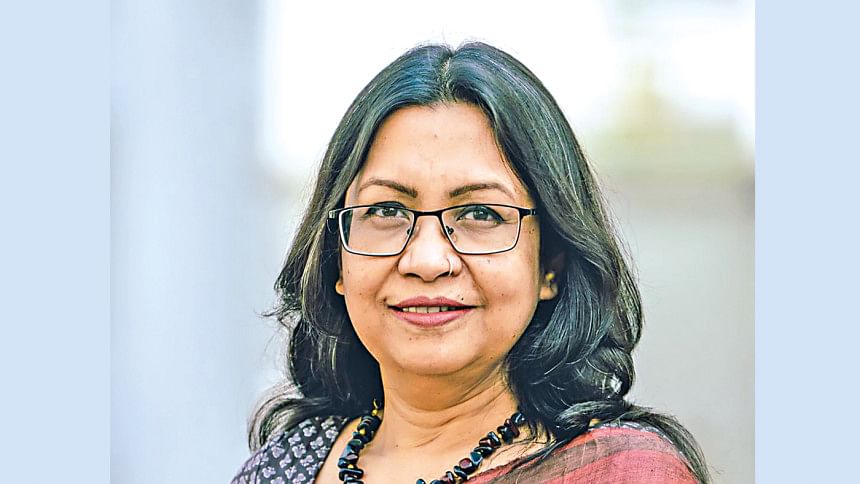Break barriers, ensure WASH access for women

Hasin Jahan,
Country Director, WaterAid Bangladesh
The Daily Star (TDS): What are the key obstacles to achieving universal access to WASH (Water, Sanitation, and Hygiene)?
Hasin Jahan (HJ): Significant challenges remain in ensuring universal WASH access. In a recent project under RAJUK, we selected a mixed-income area—ranging from high-income residents to slum dwellers—as a pilot for scalable solutions.
A key challenge we identified is the disparity in water access. Previously, the lack of land ownership denied the poor access to water. Now, they can apply collectively based on human rights principles to secure access. While WASA has improved water distribution in slums, access remains uneven.
In NGO-supported areas, distribution is systematic, but in others, many rely on illegal sources, often at high costs. Some have organised informal water distribution networks, yet resources remain scarce—one tap serves 100 people across 30–35 families. A stark inequality is evident: slum dwellers survive on just 7.5 liters per person daily—below emergency standards—while households in Banani consume approximately 250 liters per person.
Sanitation is equally dire, with shared toilets used regardless of gender. Women and girls often shower in open spaces, facing severe dignity and safety concerns.
TDS: What additional barriers do marginalised people, especially women, girls, persons with disabilities, and indigenous communities, face in accessing WASH?
HJ: Marginalised communities face significant barriers to WASH access, primarily due to a lack of security, dignity, and recognition of their unique needs. While men also face security challenges, the issue is more severe for women. Women's access is further hindered by stereotypes suggesting they do not deserve additional privileges, compromising their dignity in WASH provisions.
Persons with disabilities are often excluded from consideration when designing WASH facilities, reflecting a broader disregard for their dignity and needs. Similarly, women's specific requirements are frequently overlooked. For instance, while men may still use unclean toilets as they typically urinate while standing, these facilities are often entirely unusable for women due to biological and practical differences.
TDS: What effective strategies can help overcome these barriers?
HJ: To address WASH barriers, existing resources must be optimised. Our analysis found 18 public toilets and two WASA ATMs in a selected area, but only three toilets were in good condition. Three were in moderate condition, while 12 were poorly maintained. Using a mathematical model, we identified high-demand areas like bus stands requiring toilets within a 200-meter interval. Although 18 toilets existed, poor placement limited accessibility. Renovating six usable toilets and adding seven new ones would optimise resources. Additionally, poor management renders many toilets unusable. A sustainable model—charging fees while ensuring affordability—can improve usability and generate revenue.
TDS: What roles should the government and private sector play in addressing these barriers?
HJ: The government alone cannot resolve all WASH challenges, given limited resources and tax evasion. To overcome these barriers, the government should focus on maximising available resources while encouraging private sector involvement.
For example, informal water distributors who charge for water access have successfully utilised government water connections to build small businesses. With financial and technical support, such entrepreneurs can expand their services by adding small toilets and water stations, creating safe spaces for women.
Moreover, the government, alongside city corporations and other authorities, must ensure water access for vulnerable groups, such as street vendors and women working in public spaces.
To engage citizens in improving public toilet management, we propose a service-oriented leasing model driven by public feedback. Currently, leases are profit-driven, leading to mismanagement. Instead, lease renewal should depend on user ratings, with higher scores—especially from women—ensuring priority for the next term.
Finally, to increase women's participation in the workforce and ensure economic growth, the government and private sector must create an enabling environment that includes reliable WASH access as a basic necessity.

 For all latest news, follow The Daily Star's Google News channel.
For all latest news, follow The Daily Star's Google News channel. 



Comments